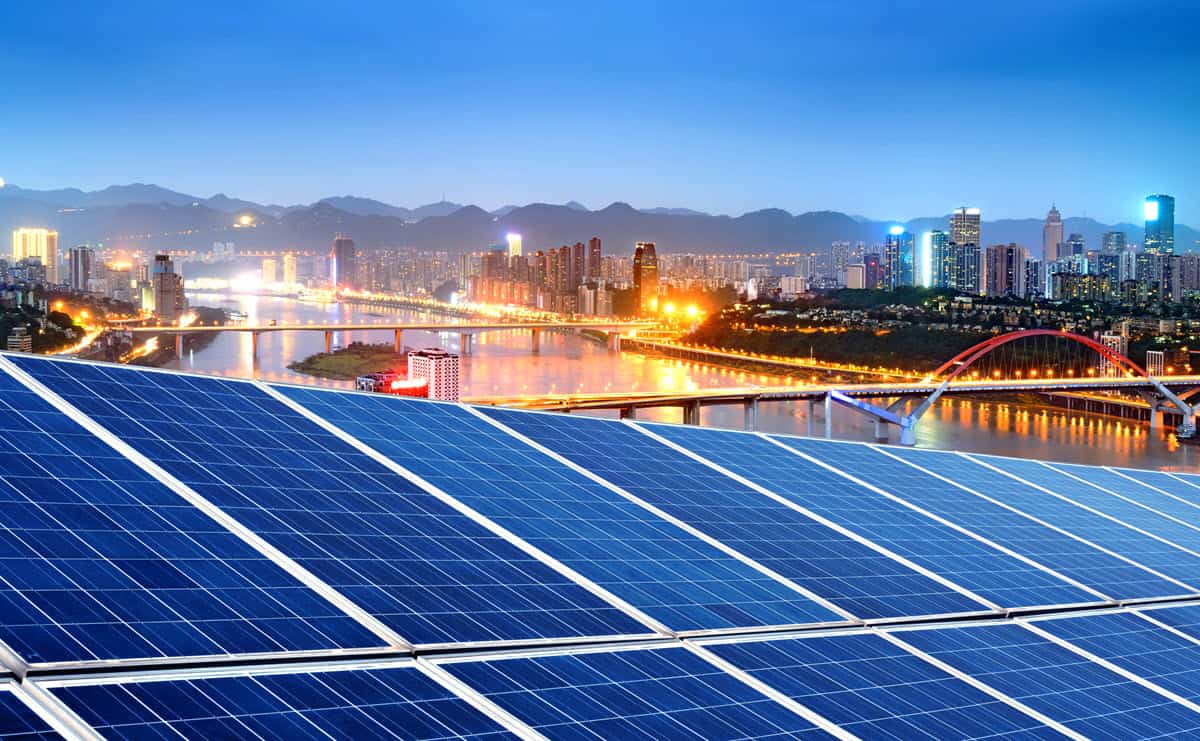Solar generators have become increasingly popular as a sustainable energy solution for residential and commercial use. Their potential to revolutionize off-grid living has made them an attractive option for many. However, a common concern is their effectiveness during nighttime and cloudy weather. This article will explore how solar generators continue to function under these challenging conditions and the technologies that make it possible.
Solar Generator Basics
Before diving into their nighttime and cloudy day performance, it’s essential to understand how solar generators work:
- Solar panels capture sunlight and convert it into electrical energy.
- This energy is stored in a battery system.
- An inverter converts the stored DC power to AC power for use with standard appliances.
This basic process allows solar generators to harness the sun’s energy and provide power for various applications. While some may wonder if solar generators can really power an entire house, their capabilities are continually expanding with technological advancements.
Performance During Cloudy Days
Contrary to popular belief, solar generators can still function on cloudy days, albeit with reduced efficiency.
Solar panels typically produce 10-25% of their normal power output on cloudy days. This reduction is due to decreased direct sunlight reaching the panels. However, this doesn’t mean solar generators become ineffective during overcast conditions.
Diffuse Light Capture
Modern solar panels are designed to capture diffuse light, which is sunlight scattered by clouds and atmospheric particles. This allows for continued energy production even when direct sunlight is limited. Advanced photovoltaic technologies have improved the ability of solar panels to utilize this indirect light, ensuring that energy generation continues even on the cloudiest days.
Factors Affecting Cloudy Day Performance
Several factors influence how well a solar generator performs during cloudy weather:
- Cloud Density: Thicker clouds will result in less energy production, as they block more sunlight from reaching the solar panels.
- Panel Technology: Some solar panels are more efficient at capturing diffuse light. Monocrystalline and polycrystalline panels, for instance, have different efficiencies in low-light conditions.
- Temperature: Interestingly, cooler temperatures can actually improve solar panel efficiency. While cloudy days may mean less direct sunlight, the cooler temperatures associated with overcast weather can help offset some reduced energy production.

Nighttime Operation
Solar generators do not produce new energy at night but can still provide power through stored energy.
Battery Storage
During the day, excess energy is stored in the generator’s battery system. This stored energy is then used to power devices at night. The capacity of the battery system is crucial in determining how long a solar generator can provide power after sunset.
Grid Connection
Nighttime power can be drawn from the grid for systems connected to the power grid. During the day, excess solar energy is fed back into the grid, often resulting in energy credits. This system, known as net metering, allows solar generator owners to balance their energy production and consumption over time.
Smart Power Management
Advanced solar generators use smart systems to optimize power usage:
- Load Shifting: Non-essential tasks are scheduled for daytime hours when solar production is at its peak. This ensures that the maximum amount of solar energy is utilized directly, reducing reliance on stored power.
- Energy Prioritization: Essential devices are given priority for nighttime battery power. Smart systems can automatically allocate stored energy to critical appliances, ensuring they remain operational throughout the night.
Technological Advancements
Recent innovations have improved the performance of solar generators during suboptimal conditions.
High-Efficiency Panels
New solar panel technologies are continuously improving efficiency, allowing for better performance in low-light conditions. Bifacial solar panels, for example, can capture sunlight from both sides, increasing energy production even on cloudy days.
Advanced Battery Systems
Improvements in battery technology, such as lithium-ion batteries, provide longer-lasting and more efficient energy storage. These advancements allow solar generators to store more energy during sunny periods, ensuring a more reliable power supply during nighttime and cloudy days.
Hybrid Systems
Some solar generators are now part of hybrid systems that incorporate other renewable energy sources, such as wind power, to complement solar energy during nighttime or cloudy periods. These integrated systems provide a more consistent power supply regardless of weather conditions.
Maximizing Performance
To get the most out of your solar generator during nighttime and cloudy days, consider the following tips:
- Optimize Panel Placement: Ensure panels are positioned for maximum sun exposure during daylight hours. This may involve adjusting the angle of the panels seasonally or using tracking systems that follow the sun’s path.
- Regular Maintenance: Keep panels clean and debris-free to maintain efficiency. Proper maintenance of your solar generator is crucial for optimal performance in all weather conditions.
- Energy Conservation: Use energy-efficient appliances and practice conservation to extend battery life. This is particularly important during periods of reduced solar energy production.
- Battery Capacity: Invest in a system with adequate battery storage for your needs. A larger battery capacity can help bridge longer periods of low solar production.
Conclusion
While solar generators face challenges during nighttime and cloudy days, they are far from ineffective. Through a combination of energy storage, advanced technology, and smart power management, these systems can provide reliable power even when the sun isn’t shining brightly.
As technology continues to advance, we can expect even better performance from solar generators in suboptimal conditions. The environmental impact of solar generators compared to traditional generators makes them an attractive option for those seeking sustainable energy solutions.
Understanding how these systems work and implementing best practices can ensure that your solar generator remains a dependable power source, regardless of the weather or time of day. As we move towards a more sustainable future, solar generators will undoubtedly play a crucial role in our energy landscape, providing clean, reliable power in all conditions.

Leave a Reply